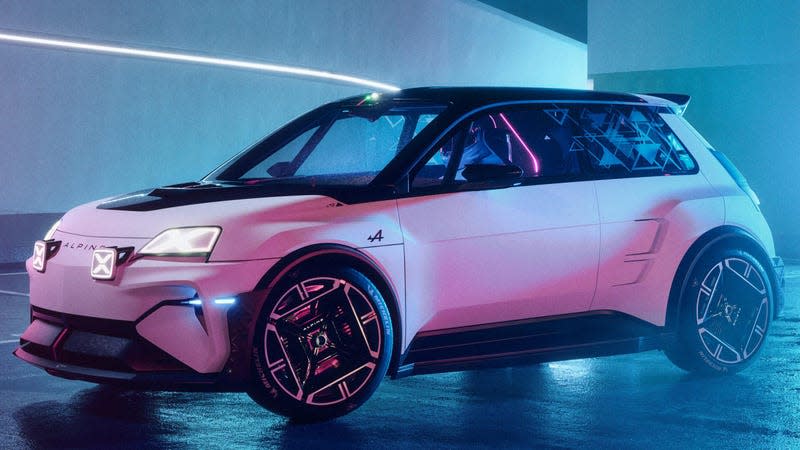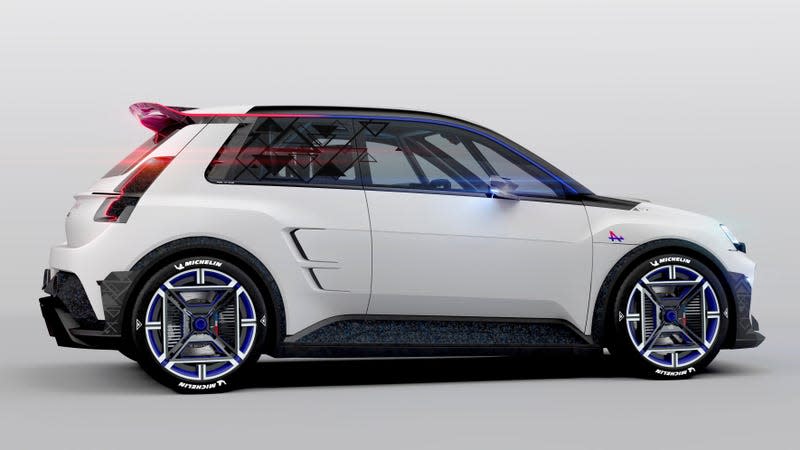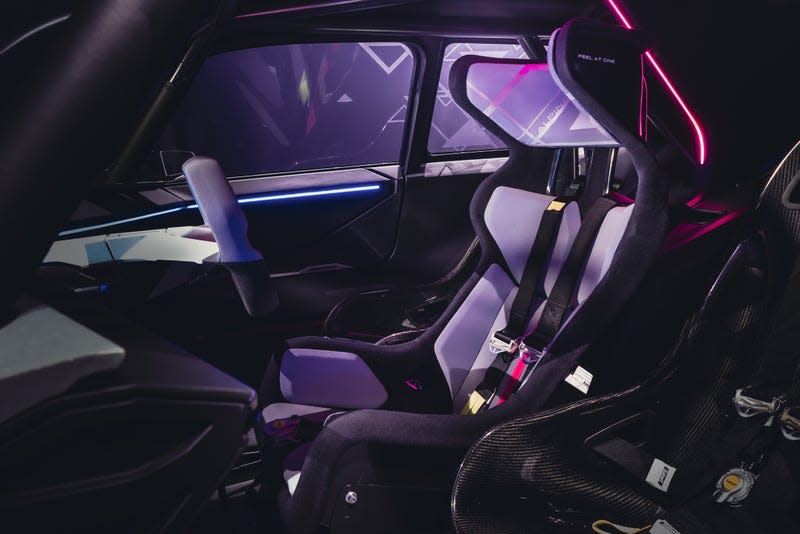The Alpine A290_β Wants to Be One of the Greatest Cars Ever

Alpine, the French automaker that makes the A110, already one of the best cars of the 2010s, debuted the all-electric A290_β on Tuesday in what seems like a bid to make one of the best cars of the 2020s, too. Or perhaps any other decade. The A290_β — all-electric, hatchback, center driver-seat upfront, style to burn, and probably not a million bucks — certainly hits almost every mark. The A290_β previews what will be a production model for 2024 that will compete with the electric Fiat 500 Abarth, whatever the hell Mini’s doing, and the Cupra UrbanRebel.
The A290_β is based on the Renault 5, and a little over 13 feet long. Alpine says the “2" in its name indicates the segment — 2 cars are small, like the 2 Series — and the “90" stands for “the brand’s future Lifestyle range,” whatever that means. The β means beta, because this car is merely a preview of what’s to come. It’s probably not coming to America so don’t even bother asking.
Read more
There isn’t much to say about the wheels except that they own:

And so does the interior, which features the center driver seat but also two seats on each side, so your passengers can enjoy the ride as well.

There are no screens. The interior is modeled after an arrow, because arrows go through the air fast.
The Alpine A290_β’ss dashboard is deliberately shaped like an arrow, to highlight the centreline driving position and convey a sense of speed, performance and complete control. This style adds to the vibrant feel in the show car’s cockpit, where every detail is at its most extreme.
The sense of oneness steeps the interior design. The dashboard, for example, has a blue line running across it and linking it with the doors. The indicator light strips beneath the wing mirrors are also blue.
As the driver can see the indicators blinking from the cockpit, there is no need for matching flashing lights inside. The blue line travels around the passenger area to enhance the connection between the driver, passengers and machinery.
All the car’s functionalities are on the centreline where the driver sits.
A console built into the roof provides instant access to several features (kill switch, indicators, light settings, etc.). One thing that sets this show car apart is that it has no screens inside. That way, the driver can focus 100% on driving and racing. It does, however, have a slender head-up display, over the steering wheel, showing the essentials (for instance speed and battery charge).
Importantly:
The driver also has a headset with a display feeding all the race-related information live: any flags the officials are waving, the track’s condition, information about the other cars, etc. The link with motor sports is palpable and entices the driver and passengers to enjoy this one-of-a-kind, sense-arousing experience. The production car will be built around the same driving experience: the cockpit will revolve around the driver – the physical layout as well as the multimedia system and virtual interfaces associated with it, such as the onboard telemetry system and Alpine animations.

 Yahoo Autos
Yahoo Autos 